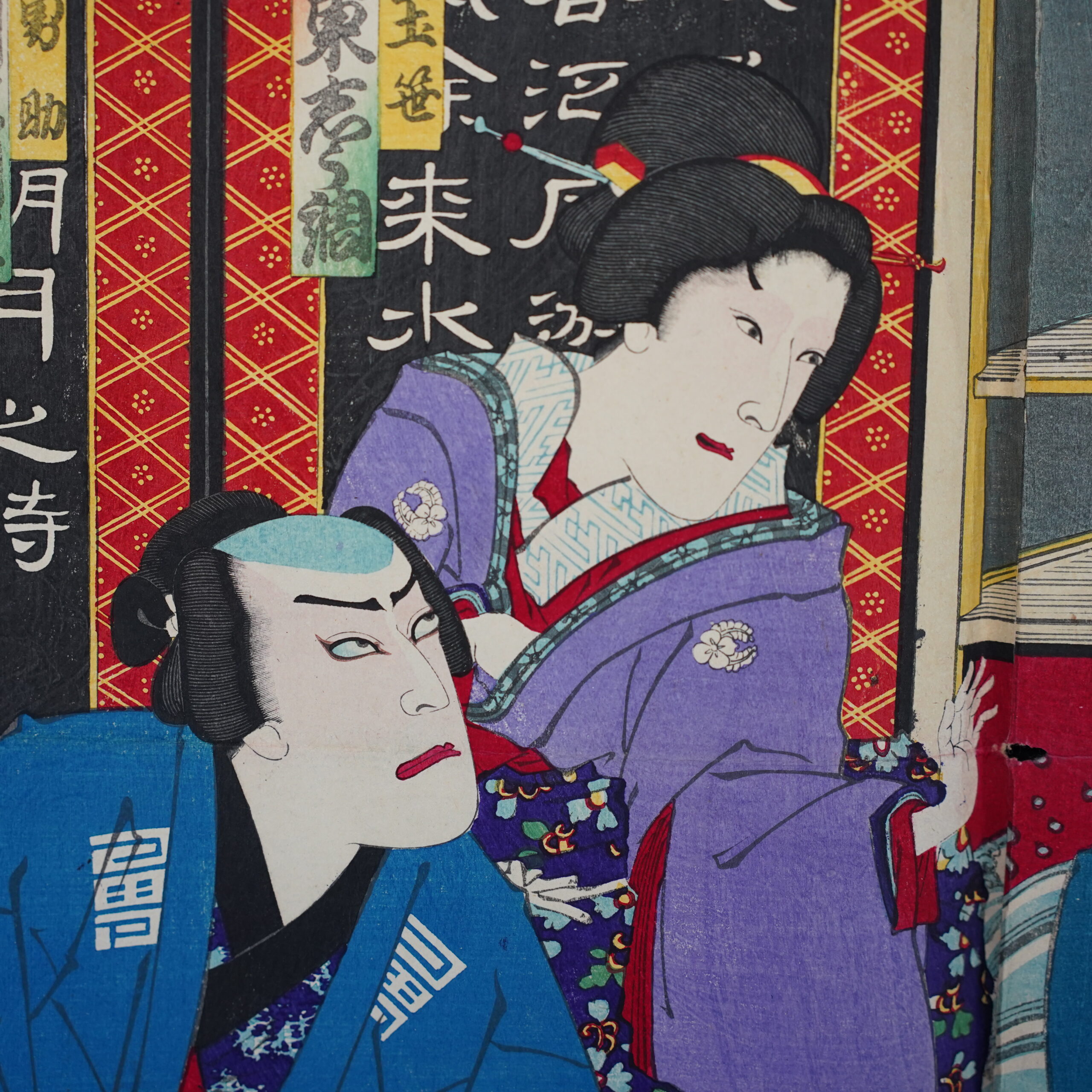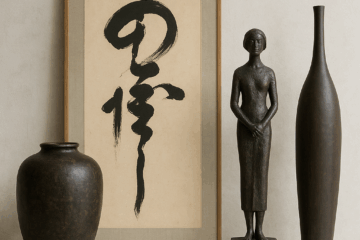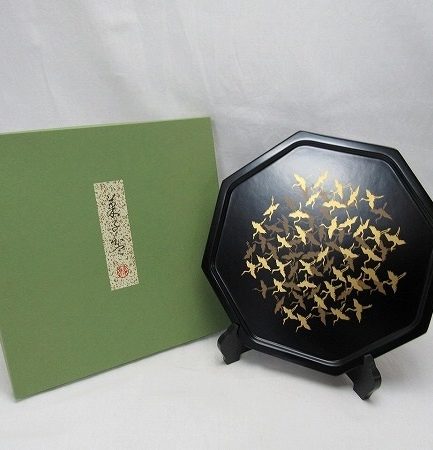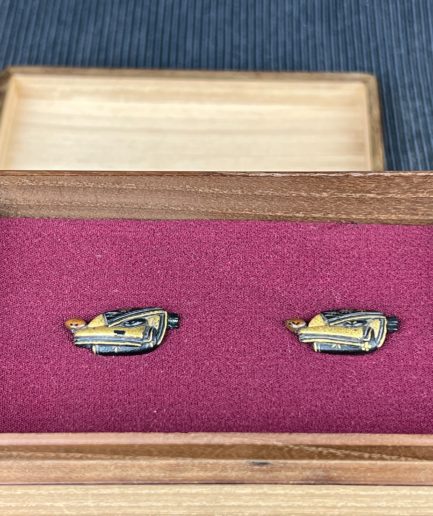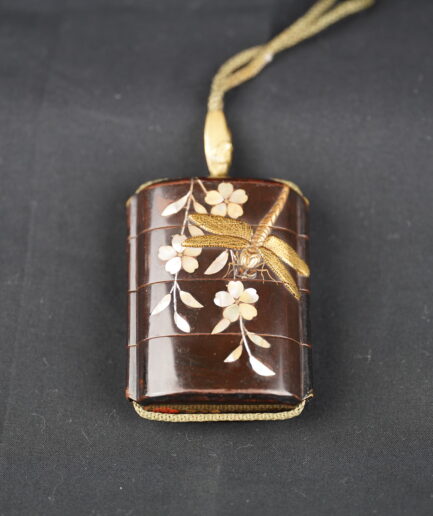Born in 1835, Toyohara Kunichika is one of the last great masters of Ukiyo-e, the popular pictorial art of Edo Japan. His bold vision and taste for innovation led to the renewal of woodblock printing, while celebrating the age-old traditions of Japanese printmaking.
The rise of an Ukiyo-e genius
Trained by the famous Utagawa Kunisada, Kunichika distinguished himself from the outset with a keen sense of composition and a palette of colors as vibrant as they were refined. At a time when Ukiyo-e was in slow decline, he distinguished himself by combining the classical heritage with the most advanced printing techniques. In particular, he innovated in the representation of faces, bringing an unprecedented degree of realism and expressiveness.
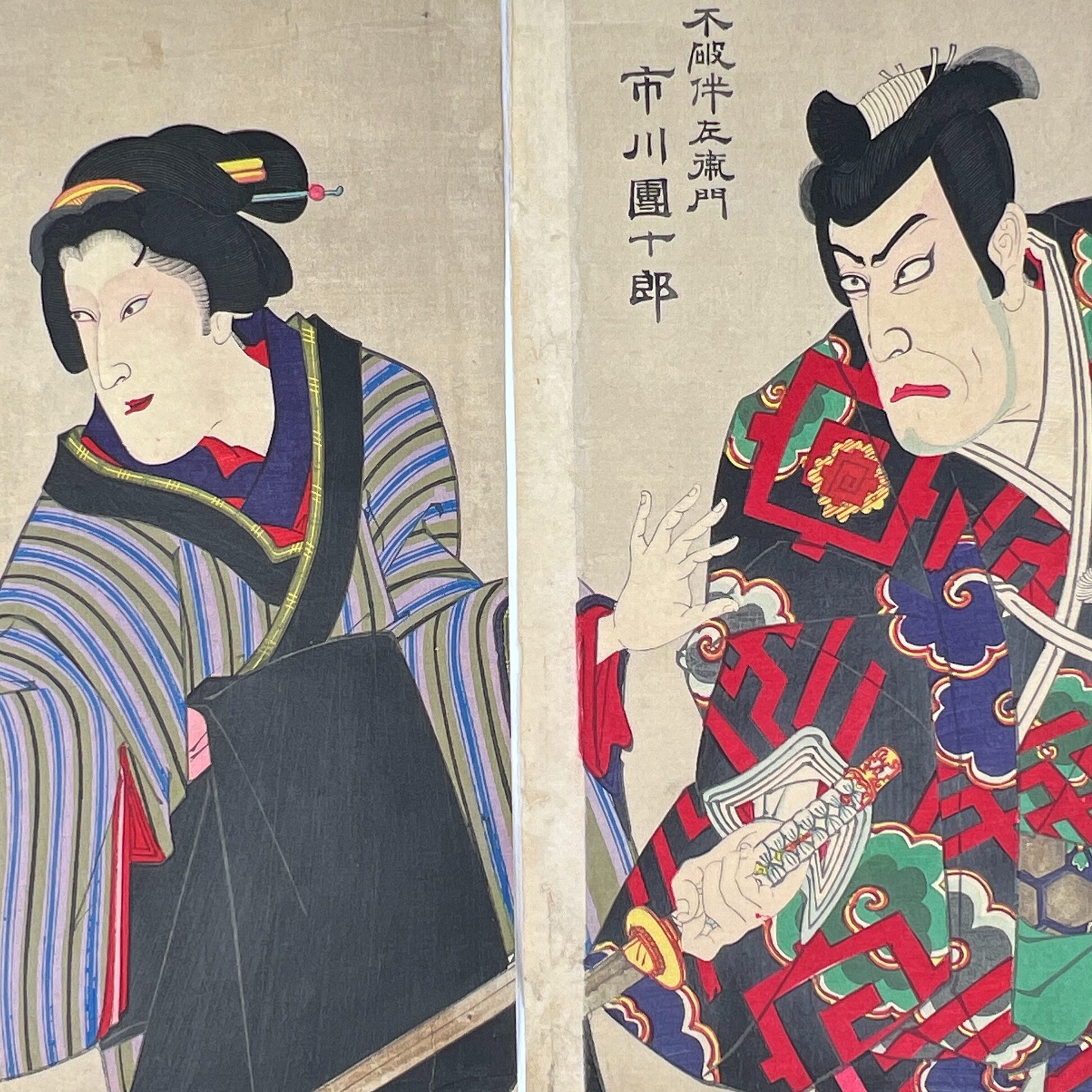
Whether kabuki scenes or portraits of famous actors, his works exude an unparalleled theatrical power. This commitment to modernity does not prevent him from remaining faithful to the aesthetic codes inherited from his masters: every stroke, every nuance of color is carefully crafted, reflecting a profound respect for tradition.
A living memory of a changing Japan
The Meiji era, which began in 1868, marked a period of profound social and cultural upheaval. Kunichika, a privileged witness to these changes and a veritable "photographer" of the print, captured all the effervescence in his work.
He never hesitated to illustrate innovations in clothing or modernized urban settings, without betraying the authentic soul of Japan. His triptychs, often devoted to the most famous kabuki actors, also immortalize the new energy on the stage.

Even today, his works are highly prized by collectors and museums, reminding us of Kunichika's singular place as a visionary artist, at the frontier between immutable tradition and effervescent modernity.
At the crossroads of two eras, Kunichika stands out as a visionary artist who embraces modernity without breaking with the age-old heritage of Ukiyo-e. His mastery of printing techniques and daring creativity illustrate not only the vitality of the Meiji era art scene, but also the profound soul of a changing Japan. His prints, now prized by collectors, still resonate with singular force, testifying to his pivotal role between tradition and renewal.

